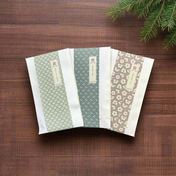If you are not sure of the differences in the types of kyusu ("tea pot" in Japanese), here is a quick guide!
1. Yokode no kyusu (横手の急須)
 Shop Jinsui Kiln Tokoname Kyusu Tea Pot (260ml)
Shop Jinsui Kiln Tokoname Kyusu Tea Pot (260ml)
Meaning: Yokode no kyusu (横手の急須) literally means "side hand tea pot". Left-handed yokode no kyusu are also available.
Design: Typically, the Yokode no kyusu tea pot has a cylinder-shaped handle placed 90 degrees from the spout. Originally, this shape made it easy to pour when sitting on a tatami mat in a traditional Japanese room, as the host would sit across from the guest rather than pour tea from the side or from behind.
Purpose: This is widely used in Japan for preparing sencha green tea. The shape was made to be efficient when pouring tea in small amounts quickly distributing among several cups (the tea at the end of pouring tends to be stronger than at the beginning).
2. Ushirode no kyusu (後手の急須)
Meaning: Ushirode no kyusu (後手の急須), literally "back hand tea pot".
Design: This type of tea pot has a round handle placed on the opposite side of the spout.
Purpose: This is probably the most widely used type around the world, and also used in Japan. Mainly used for teas brewed in a traditionally "Western" style (low leaf, high water, long steep time).
3. Houhin (宝瓶)
Meaning: Houhin (宝瓶) literally "treasure vessel"
Design: A houhin is a kyusu without a handle and used mainly for steeping gyokuro tea or very high grade sencha. In addition, it has a wider spout compared to the other types of kyusu. Although it does not have a handle, gyokuro is steeped using water temperature around 60 degrees or lower so there is no need to worry about burning your hands!
A variation of the houhin without a strainer is a shiboridashi kyusu (though sometimes this can have a handle also).
Purpose: Perfect for gyokuro and high-grade sencha. Fast pour times allow you to carefully control the steep time. This will help you achieve the perfect brew!
4. Uwade no kyusu or Dobin (上手の急須, 土瓶 )
Meaning: Uwade no kyusu (上手の急須), literally "top hand tea pot". Also called a Dobin (土瓶), literally "earthen bottle" in the sencha tea ceremony terminology
Design: This kyusu is shaped like a tea kettle with a handle above the body. Because the size of this type of Japanese tea pot is larger compared to other types of kyusu found in Japan, it becomes handy when serving many people.
Purpose: Recommended for teas such as houjicha and bancha or in situations where you have many guests to serve.







4 comments
I love your site. I have a small teapot is it a Kyusu teapot and can it be used for Green Tea. Thank you
Could you tell me anything about this Japanese Teaset please? I love it and am keen to know more of its origins . It’s red glazed clay with brown/ green pattern banded detail and inset with cameo of leaves and dots . Footed handle less cups(6) and Kyusu pot . In box with Japanese letters.
Thanks
I have a tea pot similar to the side pour but bigger and the top is more recessed. If you tell me how I can send you a picture. I’d like to know more about the form of the tea pot, the history.
I bought this teapot but I don’t know what kind it is I would really like to know